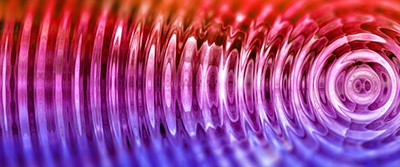New Nanotechnology Upends Traditional Ultrasound

By Gina Wynn
Researchers at The University of Queensland (UQ) recently made a nanotechnological breakthrough that could transform the way scientists understand biology.
They developed a new way to measure ultrasound that is so sensitive and precise, it can detect minute forces around air molecules.
Tiny Sensors
Sahar Basiri-Esfahani, PhD, now at Swansea University, led the team that combined modern nanofabrication and nanophotonics techniques to build miniscule, highly accurate ultrasound sensors — less than a millimeter across — on a silicon chip.
"We're now able to measure ultrasound waves that apply tiny forces — comparable to the gravitational force on a virus,” said research team member Warwick Bowen, PhD, of UQ's Precision Sensing Initiative and the Australian Centre for Engineered Quantum Systems.
Vibrations at Work
Ultrasound itself is a pattern of vibrations similar to sound, but at frequencies above the range of human hearing. Machines direct ultrasound waves toward a structure; the waves bounce off and create an image called a sonogram.
In medicine, ultrasound is used to create pictures of organs and structures within the human body and can even capture body systems in motion. Doctors commonly use ultrasound to examine pregnant women to detect movement in the womb, evaluate development, and listen to the heartbeats of developing fetuses.
Other uses of ultrasound include creating images of underwater objects and navigating unmanned aerial vehicles. This new device works much like the ultrasound machines in use today, but on a much smaller scale.
Increased Capabilities
Bowen calls it a “near perfect ultrasound detector” that will enable scientists to improve upon existing ultrasound technologies and add significantly to their capabilities. "This is a major step forward, since accurate ultrasound measurement is critical for a range of applications," he said.
Basiri-Esfahani looks forward to seeing what future usages emerge from her team’s development of the new ultrasound detector. "We'll soon have the ability to listen to the sound emitted by living bacteria and cells," she said.
"This could fundamentally improve our understanding of how these small biological systems function, Basiri-Esfahani added. She hopes it will also lead to new medical treatments.
Discussion Questions
- How is ultrasound different from an X-ray? Have you ever had an ultrasound or an X-ray?
- Name some other types of nanotechnology? How could it be useful?
Vocabulary
- Ultrasound
- Nanotechnology
- Silicon
- Gravitational